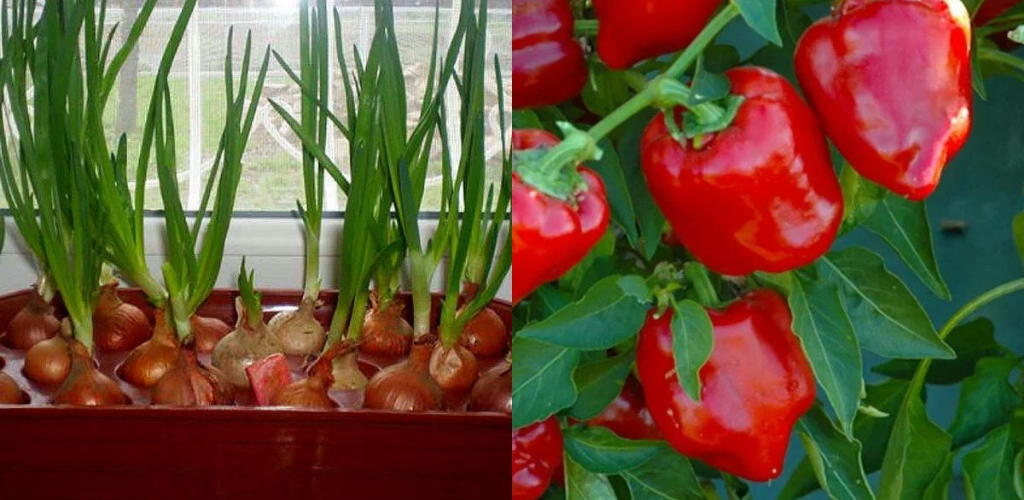The 10 Best Vegetables That Grow in Pots
Gardening in pots has several advantages. In addition, there are several types of high-performance containers on the market today that you can choose from (terracotta pots, plastic pots with water reservoir and chimney, raised wooden beds, geotextile bags such as Smart Pot, etc.) depending on the space available, the budget or the type of crops you want to grow. Among the most interesting vegetables to grow in pots are fruit vegetables such as tomatoes, peppers and eggplants, as well as fast-growing crops such as peas and lettuce. Take a look at these vegetables that you can grow even if you don’t have a garden plot, but you do have a balcony or a place, preferably well exposed to the sun.
Tomatoes (Solanum lycopersicum)
Growing Tomatoes
Growing tomatoes in pots is easy and incredibly satisfying. Most tomatoes do best in large pots (about 60 litres) and require staking (with ties, spiral stakes, etc.) or a tomato cage. This support prevents the heavy fruits from bending and breaking the stems. Tomatoes do not like the cold, so do not plant them too early. Be sure to acclimate the plants to the outdoors gradually before planting them. When transplanting, bury half of the plant at a 45-degree angle underground. It may seem surprising, but tomatoes have the particularity of producing roots along their stem. Don’t worry, the plant will straighten up quickly! In addition, this method will allow it to establish itself better, and in turn, produce more fruit.
Peas (Pisum sativum)
growing tips peas
Pea plants can be planted in early spring and then again when the weather is cool in mid to late summer. There are three main types of peas: shelling/garden peas, sugar snap peas, and snow peas. They are great for succession planting because they add nitrogen to the soil. Depending on the variety, most peas require some type of medium. Plant them in early spring. Once the weather is warm and they have finished producing, dig them up and plant something else in that container. Nitrogen is a vital nutrient that fertilizes the soil for the next batch of plants. Peas are also one of the best vegetables to grow with your kids; they grow quickly and easily.
Potatoes (Solanum tuberosum)
Growing potatoes at home
Freshly picked potatoes taste quite different than the potatoes you buy at the grocery store. Growing potatoes in containers requires a lot of soil and water, but it’s worth it. Containers also provide an extra layer of protection against fungus or mildew, which spread more easily among plants in the ground.
Summer and winter squash (Curcurbita)
How to grow balcony squash
Summer squash is very productive. Especially since the ideal time for zucchini is to pick them immature, they are more tender and do not have seeds. By harvesting zucchini regularly, you will have a consistent crop throughout the summer season. Most summer squash plants are bushy and need plenty of space. A container with a diameter of 60 cm and a minimum depth of 30 cm is ideal for growing zucchini. Several types of containers are suitable, provided that they have at least one good drainage hole in the bottom.
Winter squash, on the other hand, is harvested later, in the fall. If you plan to grow winter squash in pots, they should have a capacity of at least 30 liters and have many holes in the bottom so that the soil can drain well. Unlike summer squash, winter squash are runners or creepers. They can be grown at ground level or, to save space and prevent them from smothering a neighboring plant, they can climb a support, fence or trellis in the garden.
Lettuce and salad greens (Lactuca sativa)
home salad growing
Growing lettuce and other salad greens in containers is quick. Container growing gives you the ability to control weeds and pests more easily than planting in the ground. Most lettuce and salad greens are spring crops, although new varieties have been developed to withstand the summer heat. You can also extend your harvest by moving your container to a cooler, shadier location.
